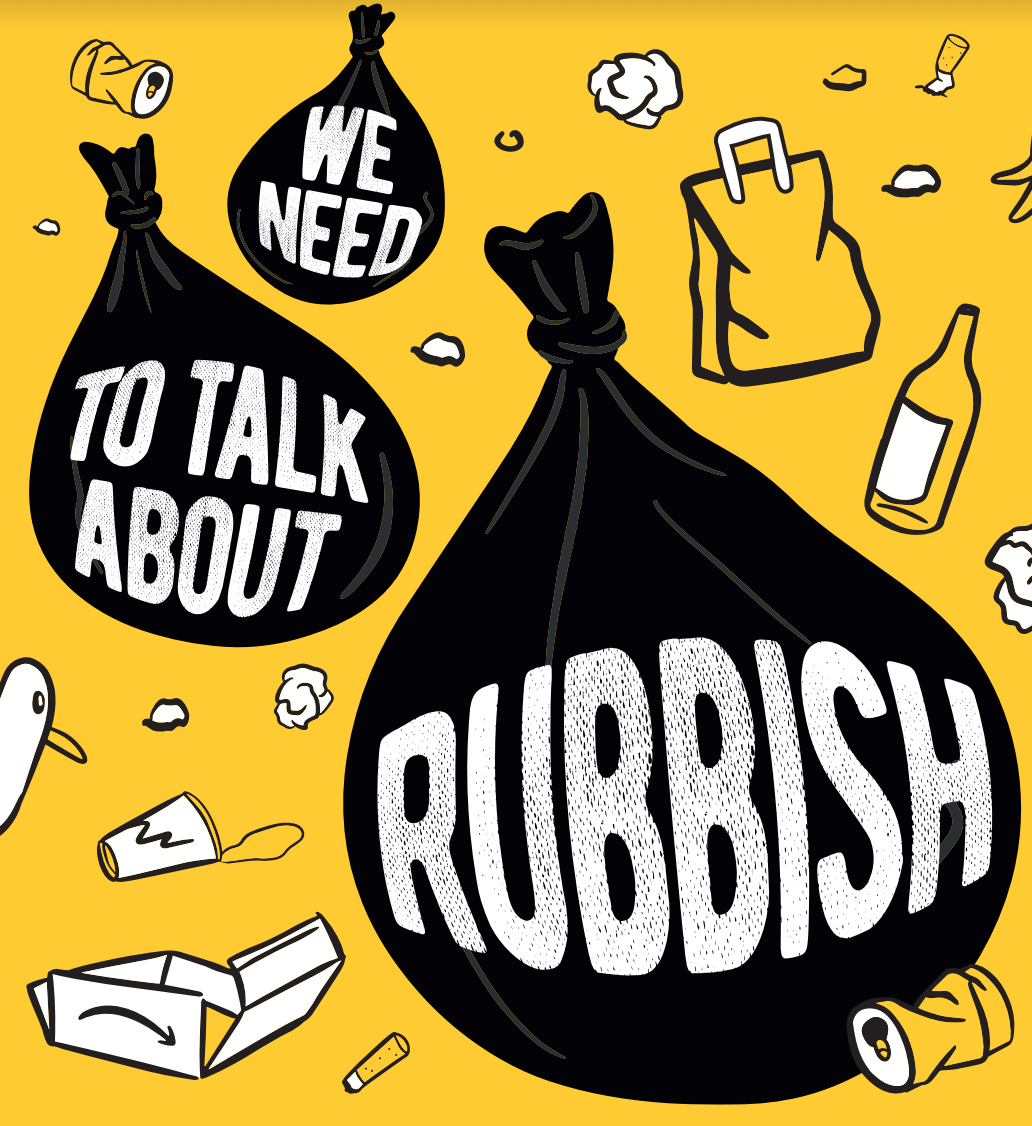The Issue of Waste Disposal
Originally published in our second print issue, Jamie Dyer discusses the issue of waste management and what is being done locally to address it.
Illustration: Laura Hurst
By Jamie Dyer
The issue of refuse collection, sanitation and ultimately the control of vermin is one that every citizen in every city around the world has to deal with. The progress made over the last two centuries to rid populations of the diseases spread by vermin, by creating systems of waste management and disposal has delivered safer conditions for millions of people worldwide.
Yet we continue to see communities across the world remain in conditions not seen here in decades. We see images of mountainous rubbish tips, seagulls swarming and we hear a constant narrative around how we as a species can best deal with the insurmountable amount of waste our consumption creates.
The everyday process of bin interaction; the selecting of items for specific coloured recycling bins and the choosing of items for relegation to landfill is an interaction with the politics of both the global and the local. Without a bedrock of community and a clear dialogue about how our city chooses to dictate to us how best we as individuals must act creates conditions of individuality and ultimately division. We notice when neighbours fail to follow the often vague and poorly communicated guidelines and pour scorn on those not privileged enough to buy the non-plastic wrapped consumable.
When people talk about Govanhill, often the issues raised are around refuse control, fly tipping and the potential for interaction with vermin. But this is not an issue for the people of Govanhill; when you walk the back courts of Strathbungo, Shawlands and Crosshill – or elsewhere in the city – you see the same build-up of rubbish and similar levels of fly tipping. I often feel the direct link made specifically with Govanhill is sadly orientated around potential racial prejudices. Ignoring the exploitation and overcrowding forced upon communities here, and the impact that has on waste control alongside an ability to ignore the same issues in other areas. We create what feels like cultural superiority and a reduction in community.
The history of vermin control is long and vast and represented beautifully through the cat sculptures found on the walls of the back courts off Daisy Street. If you walk down Allison street you may spot calls for action and people attempting to find volunteers to help clean up parts of the area. People have, and always will, want to live in a safe and clean community.
Recently Glasgow City Council piloted reduced bin collections in the East End. Now main door properties in the Southside are moving to three weekly green bin collections. Much of the frustrations felt during the pandemic around bulk uplifting and certain bin collection days ending has been accepted within the context of a public body struggling to focus resources on fighting an unpredicted pandemic. The fundamental fact that during a health crisis, refuse collection is one of the first public services to feel the brunt of austerity has understandably been met with anger and organisational bodies have orientated frameworks to try and change policy and give voice for those who simply want cleaner streets and back courts.
The GMB Union continue to do great work in highlighting the poor working conditions of refuse collectors as well as standing in opposition to any policy that has the potential to cause further health implications for communities across the city. Their Facebook page is an important resource in understanding the conditions they are met with everyday, and the type of organised action they take in order to improve policy at council level. Living Rent, Scotland’s tenants union have now set up a Govanhill branch and are working alongside GMB to push for change.
There is impetus and there is action. There are organisational frameworks and a desire to find solutions to Glasgow’s and Govanhill’s refuse-related issues. Glasgow City Council’s app used to report issues such as these directly may seem cumbersome and inconsistent but many have found action is taken quickly when using this system. Ultimately, the blind reporting of issues through an app feels unpersonal and fails to resolve the roots of the issue, but it is none the less a resource worth having.
Through bodies such as Living Rent and access to the workings of unions like the GMB we can take ownership of the conversation and engage positively with policy-makers about the problems people face every day. Community is built from the bottom up through collectivised action and an understanding of one another. This issue must be dealt with through dialogue, respect and a refusal to accept a poorly maintained Govanhill.
